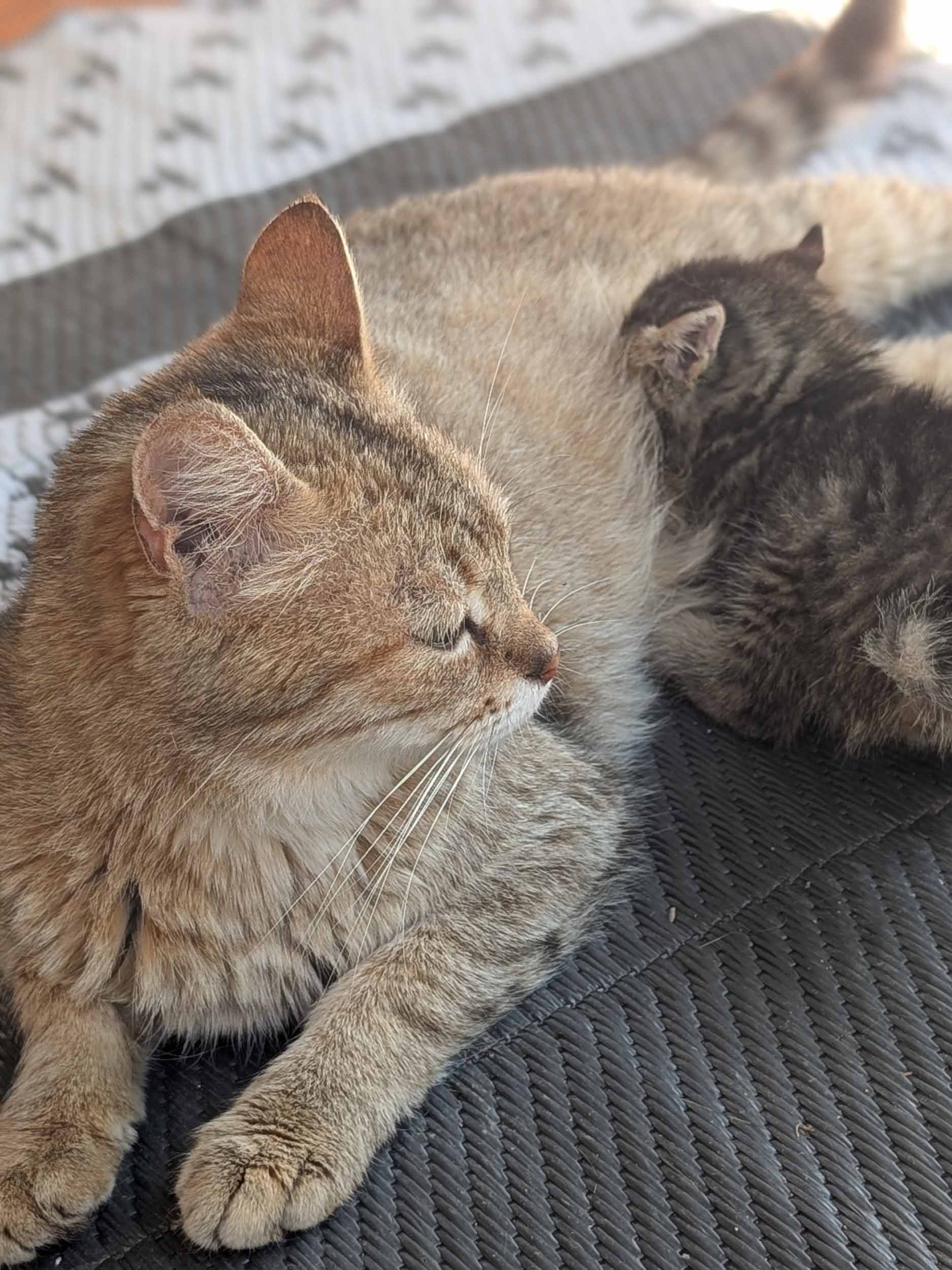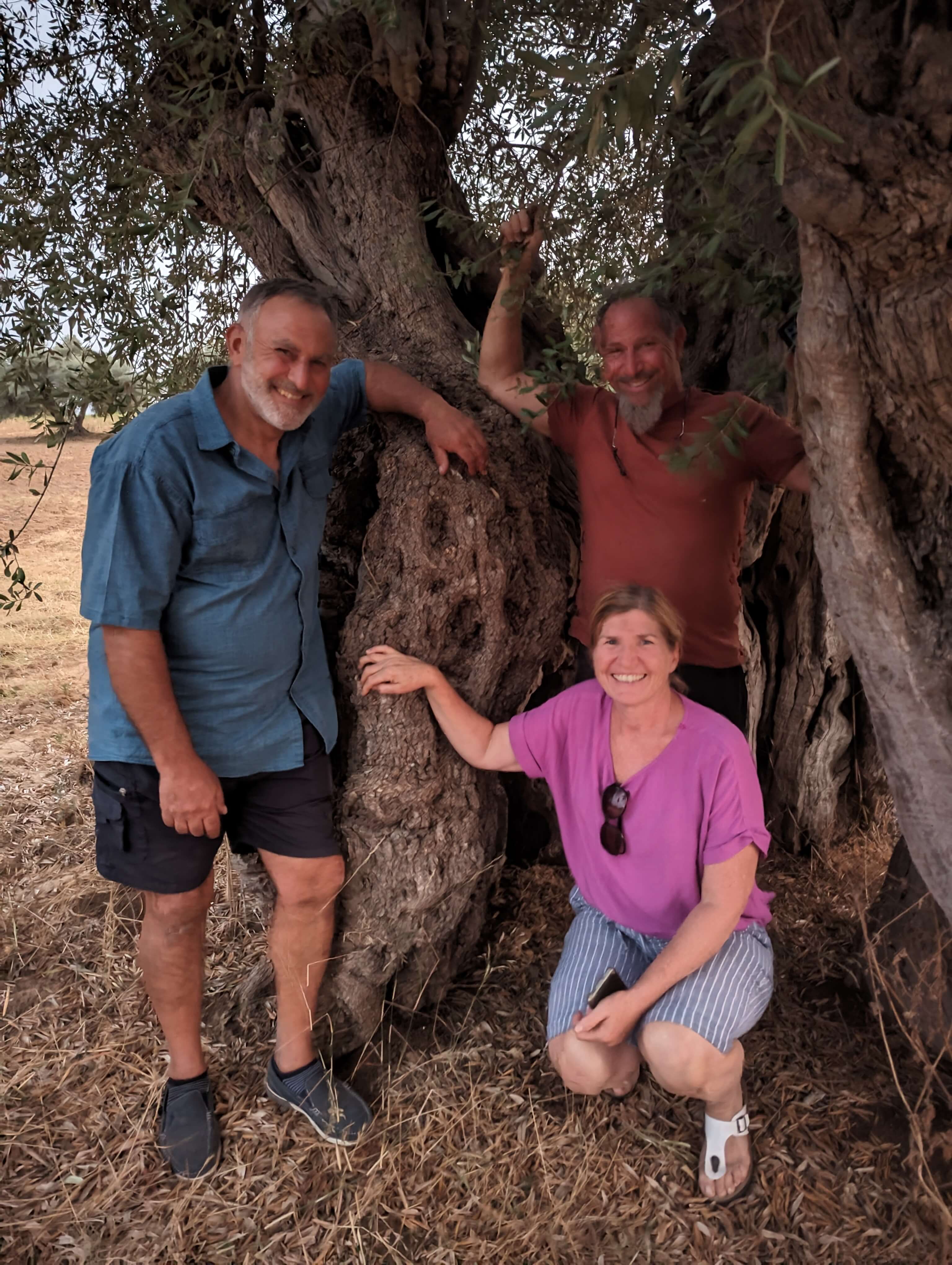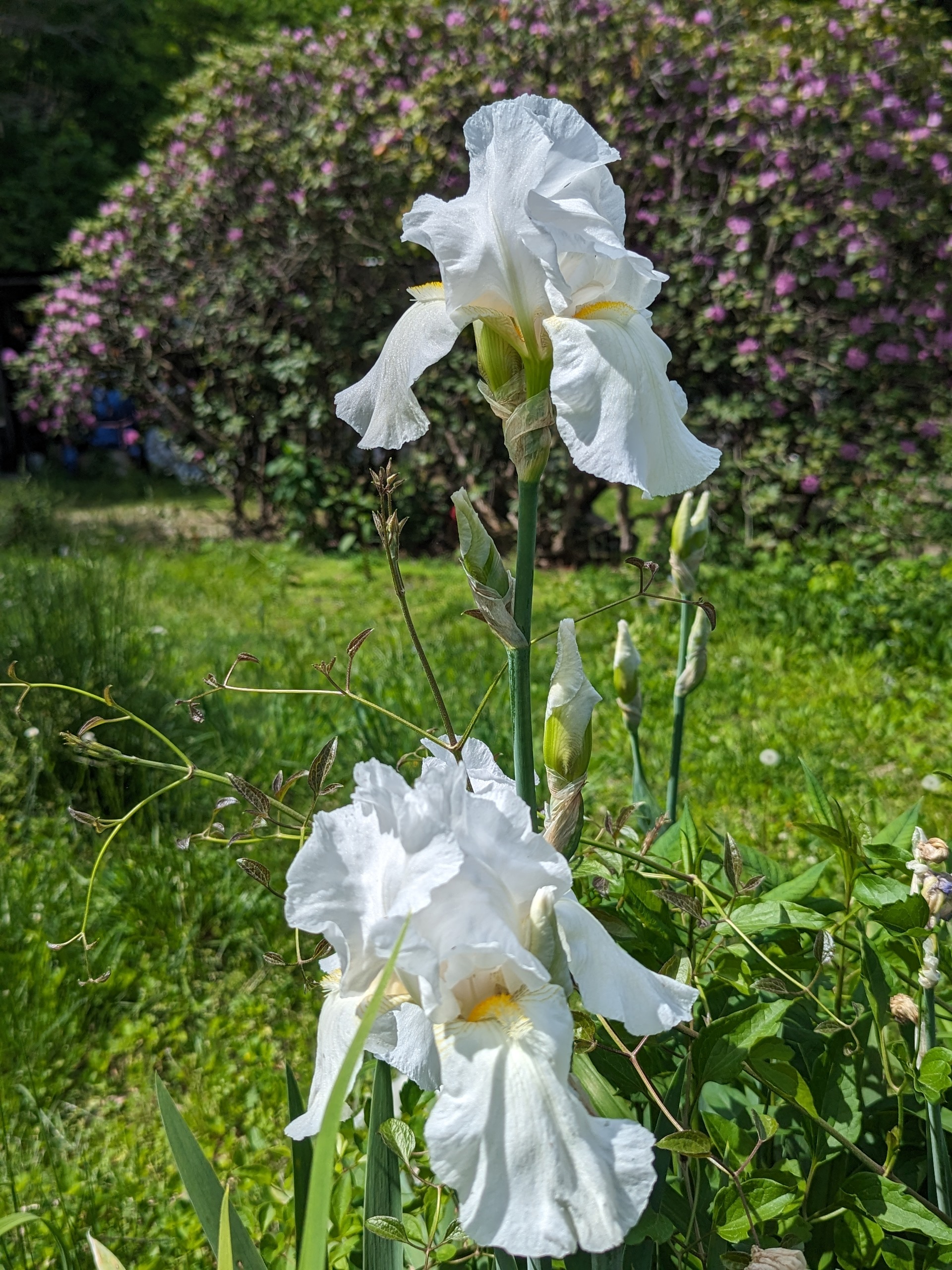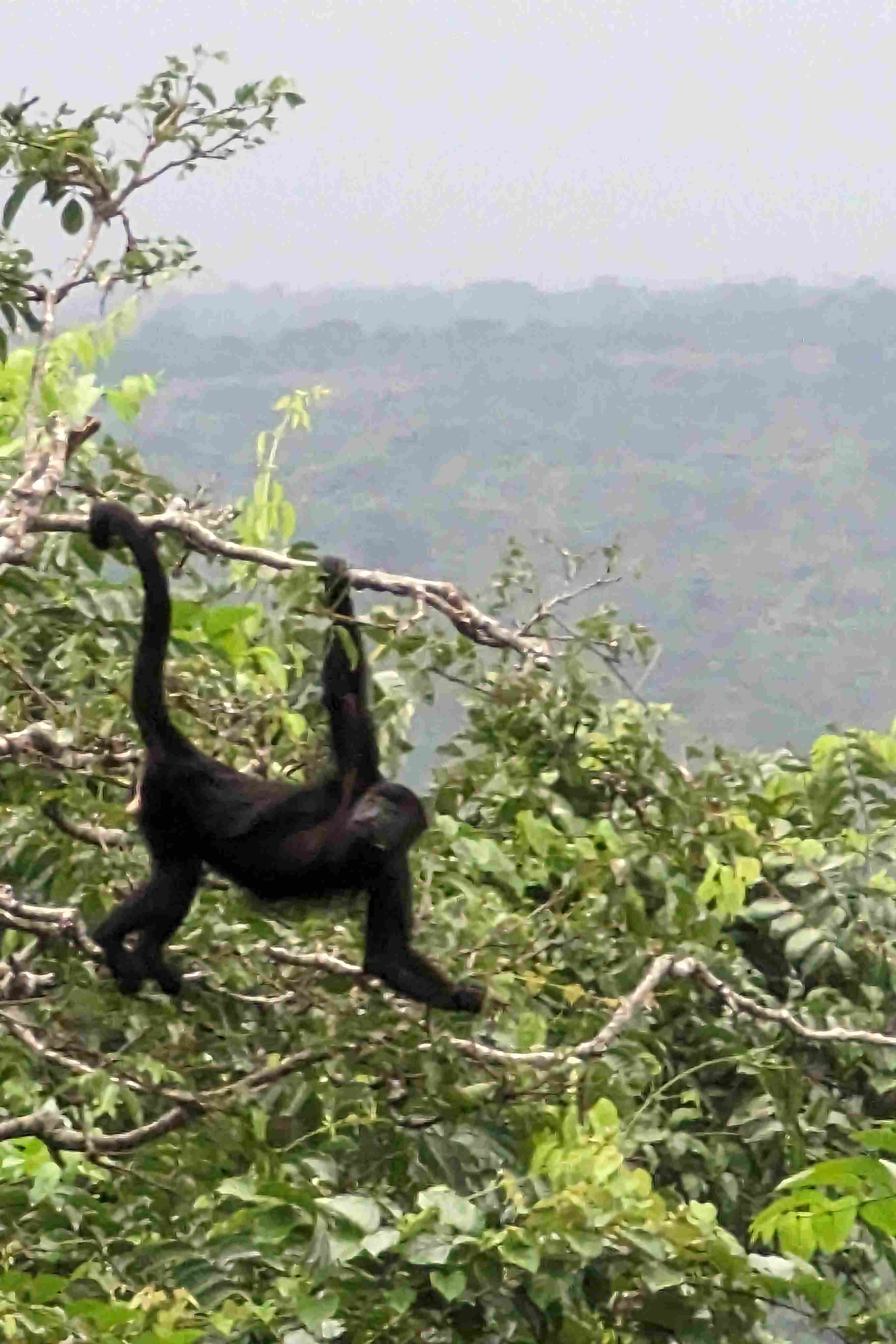I wrote this post last spring as we were embarking on our journey back from Sicily to the US. I had not posted it as we were immediately submerged in life in the States, scrambling with renovations, farm dinners, and family affairs.
What a joy it was to spend the summer in the mountains, but I must admit, sitting here retyping this introduction, listening to the fireworks of the Sicilian harvest festivals outside my window, I find myself counting the minutes until the olive mills turn on their lights and the scent of olive oil fills the air. For now, we’ll walk through the last weeks of the grape harvest and fill our bellies with the flavors of the season.
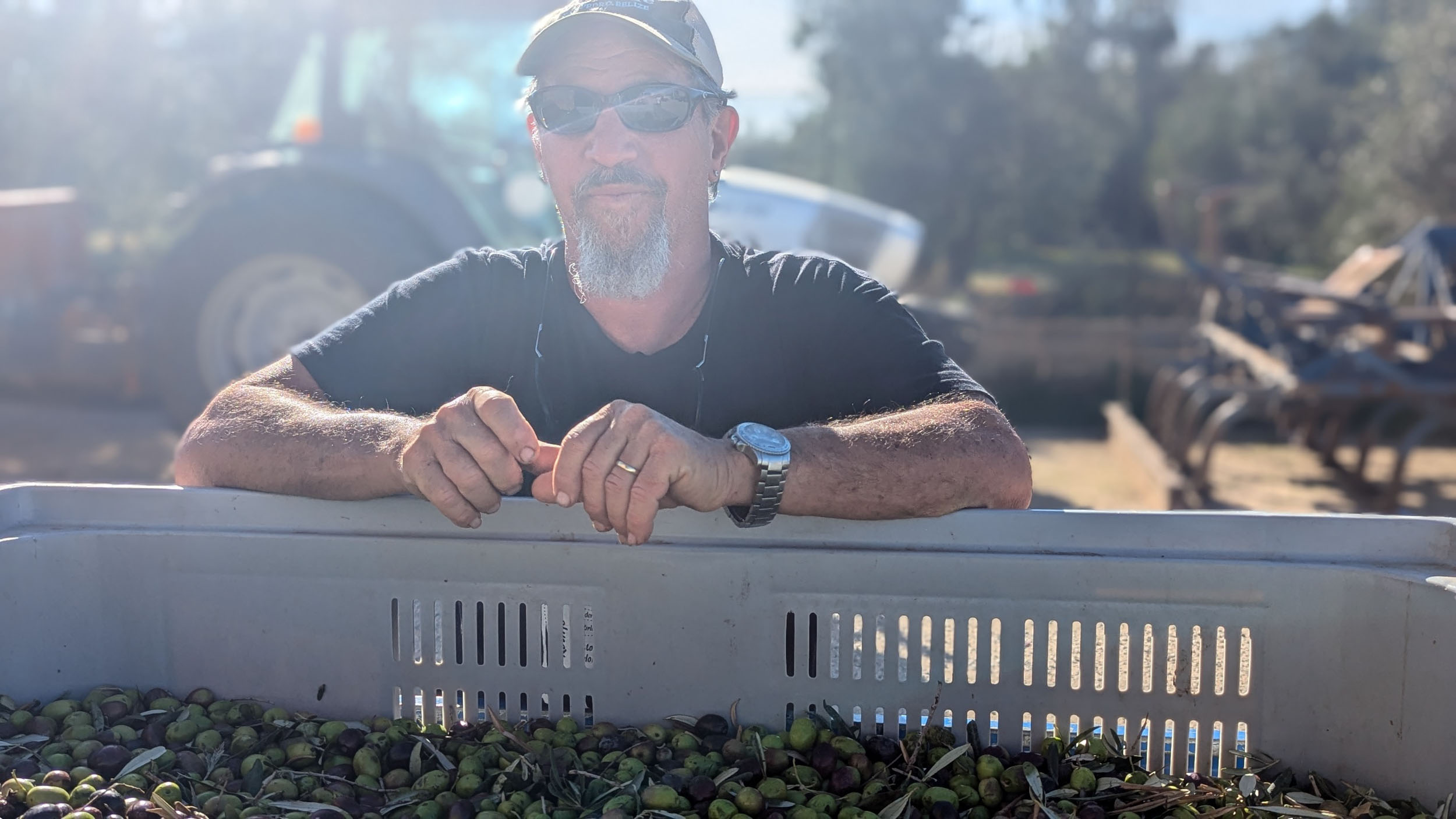
Danny, with his olives, is waiting for his turn at the oleificio.
The scent of an olive changes throughout the stages of its life. From the first clusters in early spring to the blossoming of the fruit itself, there is a distinct, fresh, and ever-changing aroma that brings me joy. Like the smell of a freshly mown lawn or a hayfield ready for harvest, the scent of the olive evokes a sensory memory in me.
While I am reminded of dozens of journeys and experiences in my journalism career, including picking, harvesting, touring, and tasting among olive groves around the Mediterranean, I believe it’s also something primal in all of us that the olive arouses. In each olive lies a history that dates back thousands of years. The olive tree is the oldest plant cultivated by humans. The olive has brought mankind light, fuel, and life. It’s a symbol of peace, a good harvest, and even good health.
The olive ultimately led us to settle in Chiaramonte Gulfi, where we embarked on our latest adventure in Sicily: renovations, culinary and cultural tours, and our olive farm. This modest fruit introduced us to two of our closest friends. You know those people you look at across the table and feel grateful to have known them for your whole life? Then you suddenly remember it’s only been 18 months.
When we first met our friends, Filippo Sardo and Marcelle New, Marcelle would direct me toward the olive oil in the cupboard during a meal, and I would grab a bottle from the shelf. “Not that one,” she’d quickly point out. “It’s last year’s oil.”
Last year’s oil is what’s on most shelves in America’s supermarkets.
We are fortunate if we can find a freshly pressed bottle of single estate extra virgin olive oil that’s six months old or less in any market outside of major cities with international ports. Eighteen months ago, I laughed when she said it; now I cautiously gift bottles of our oil to friends and family from our first 70-liter harvest while eyeing my reserves. I calculate how many liters we’ll need for dinners, personal consumption, and samples before the presses begin again.
I have always loved high-quality olive oil, and we have always kept the best products we can find in our home in the States. But now I am obsessed. After our first harvest in 2024, I calculated the amount of oil we used at our house in Blue Ridge, Georgia, so I could be sure to bring enough back after our 2025 harvest. We made it down to our last 500ml before returning to Sicily this fall, where our reserves are stored. It was like a visit to Fort Knox, tapping the stainless steel fusto to fill a bottle when we returned home to Chiaramonte. It came pouring down, beautiful green-gold lava from tap to bottle. With it, the scent of the olive overtook me again.
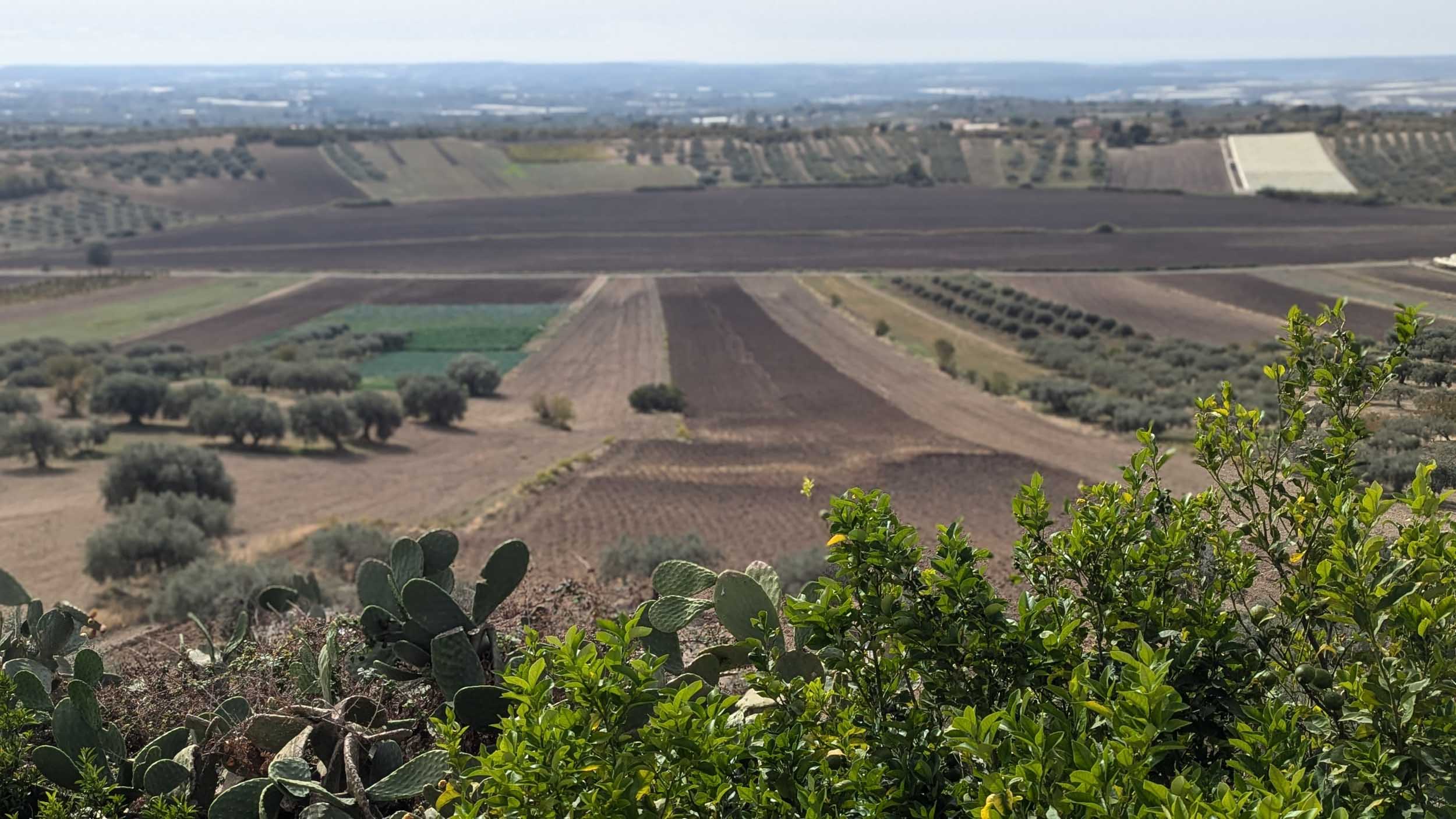
The young trees now fill the fields below.
Planting Roots
Our return this spring brought us to our fields, where 350 young trees had been planted in our absence at the hands of our amazing Sicilian friends. Work on our older trees was yet to be done, and we arrived to prune just in time before winter’s window closed and the spring sun brought the olive branches back to life.
Again, our friends led the way, with Filippo and Giovanni Buscema at the forefront, teaching Danny the art of pruning. It’s backbreaking work, but a skill so important in this region that Filippo and Giovanni are sought after for their craft for the short few months the climate allows for the pruning season. Danny apprenticed with them the year prior. Before we even had our own trees, he was engrossed in learning, picking up branches, watching them work, and making lunch. This year, he was able to prune our trees on his own side by side with his friends.
We made it just in time for the season. Within weeks of our mid-March arrival, the trees began to show off for us, producing what at first appears to be hundreds of little olives, but there’s even more to come.
With that work out of the way, and with Pasqua, Danny’s 65th birthday, and guests arriving, it was time to rest, eat, celebrate, and eat again. Sicilians know how to celebrate; there is a festa (festival) for every occasion, and a celebratory meal with friends begins with a headcount of at least fifteen, which ends typically up around thirty. We enjoyed the break but were eager to get back to work.
Backbreakingly Beautiful Results
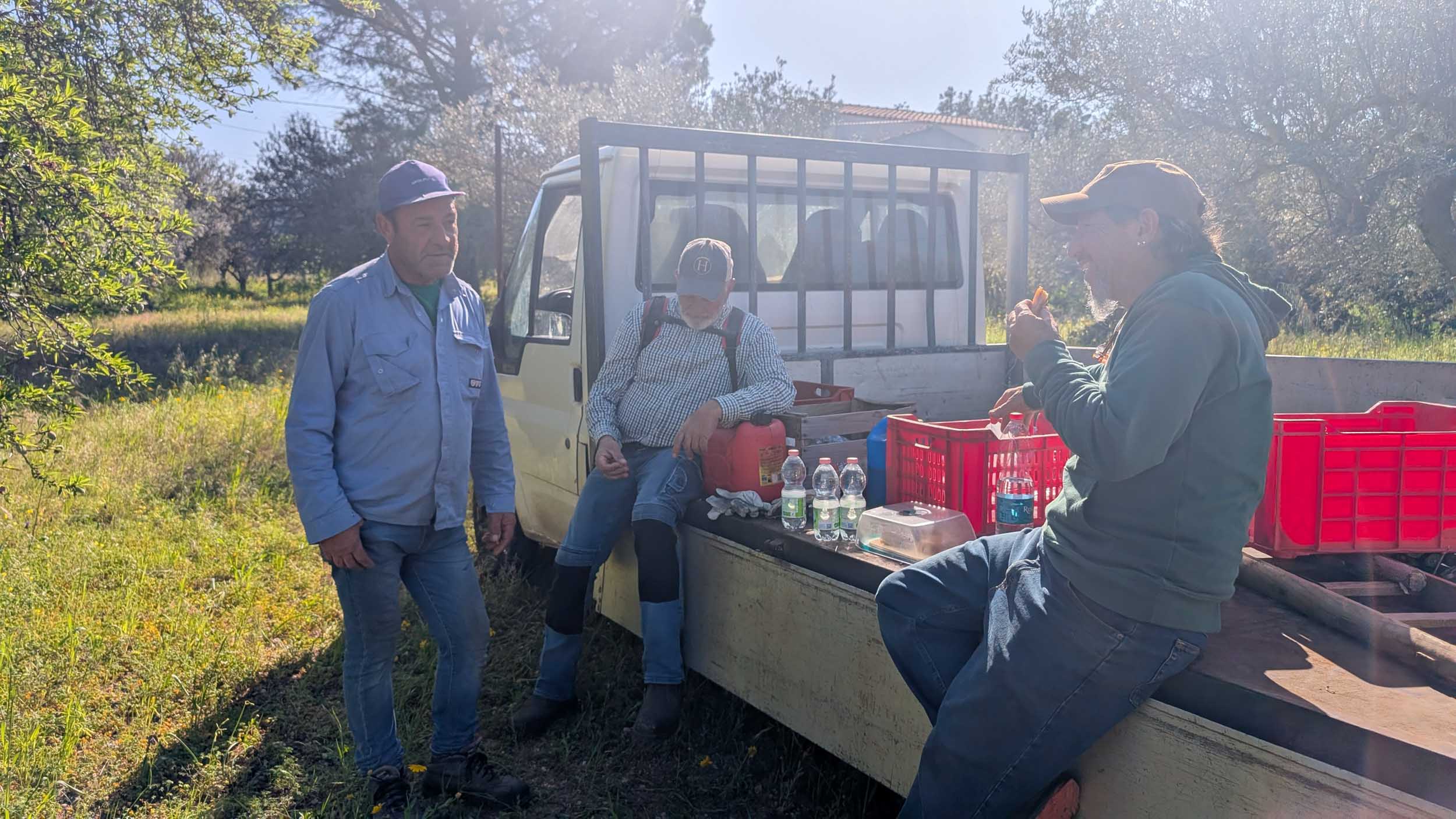
This past spring we set out to prune the trees before the 2025 harvest.
Back to the olive. You may be wondering why excellent olive oil is so expensive. Or perhaps you think there’s simply no difference between olive oils. Well, here’s the deal. Really great, high-quality, single-estate olive oilis hand-picked. Even with small machine assistance, the olives aren’t harvested with big machines rolling through the fields shaking the trees. And better oil is harvested, pressed, and stored on the same day. But that’s really the end of the story. The work leading up to the day they are ready to pick is backbreaking.
I’ve already discussed the pruning, but that’s just the first step. Next comes tilling the fields around the trees, followed by cleaning close to the trees themselves. This involves removing the wild olives that grow and multiply, entangled in the roots of the tree and on the trunk itself, much like barnacles on a whale. Two years ago, Danny was drawn to those wild olives and sought a way to transform them into table olives. Now, with our olive farmer glasses on, we view them as an enemy, eradicating them from over forty trees just as the Mediterranean sun began to warm the soil. After wrapping up that task, it was on to weeding around the 350 new trees, by hand, so as not to damage their tender youth.
It was a week of work, mostly completed before mid-afternoon, so that we could return home at the height of the day, have lunch, and take a rest. We’re slowly embracing the working lifestyle of Sicily. Danny still fights off a nap, but I have come to look forward to the afternoon rest time. My days are best when I rise with the sun, enjoy a cappuccino, work until mid-afternoon, make lunch, take a nap, and then work on business in the just-waking American timetable. And by the time my counterparts in the US are hitting their 3 p.m. sleepiness, we’re wrapping up dinner, closing out our thoughts for the day, and preparing for bed.
In our region, growers prize the Tonda Iblea variety. It’s a strong, hearty olive native to Sicily and primarily grown in the Ragusa area, near the mountain range that gives it its name. It wasn’t always a favorite, as it doesn’t produce as much oil as other varieties. But what it does produce is amazing. The round olive produces an earthy oil that’s got a smooth, medium intensity, and an outstanding balance of pungency and herbaceous flavor. You have to pick it at the perfect time, when it’s still green, but just beginning to take on its fully ripe black appearance. Decades ago, producers would pick and press when the olive was black, resulting in larger yield but a weaker flavor profile and less health benefits. Extra virgin olive oil with the highest levels of beneficial polyphenols and antioxidants is the benefit of harvesting olive early, when they are still green.
Growers in this region of Sicily hand-pick and cold-press their olives. When you drive through the countryside of Ragusa, you’ll see these old oleificios (olive mills) at every roundabout or tucked away on a side street. You think to yourself, why would there be so many, but when the harvest begins, you’ll soon discover the wait time to get your olives pressed. It’s impressive in late September and October to see what appear to be vacant old buildings come to life as the harvest begins. The presses run throughout the harvest, and the scent of crushed olives is so fragrant that it carries on the breeze throughout the region.
It’s a scent we yearn for now. While we love every season in Sicily, the fall harvest is always on our mind.
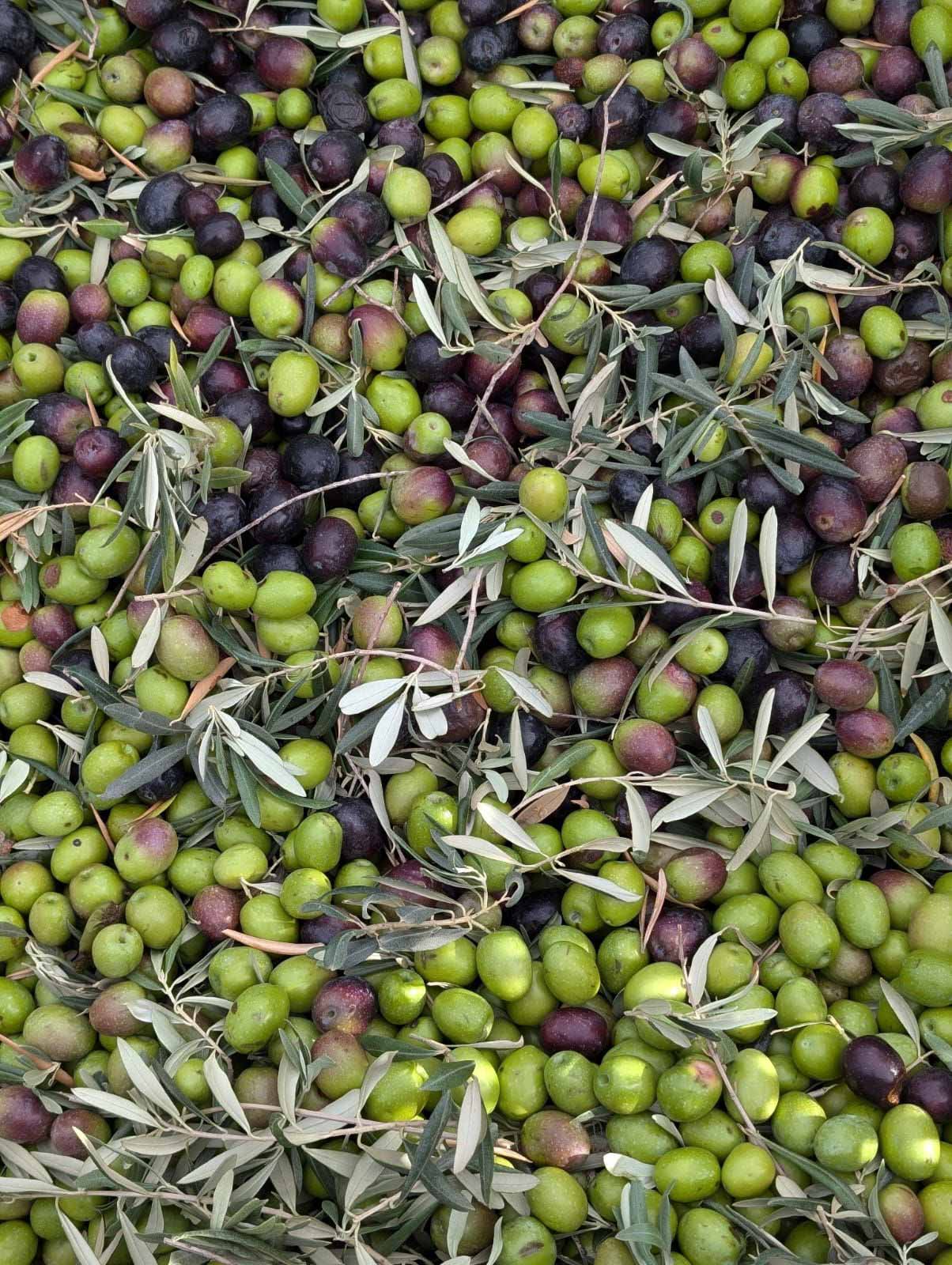
Picking the olives at the perfect time is crucial to ahieve the best benefits from EVOO.
We watch with anticipation, the winds, heat waves, and cold snaps, the amount of rain, hoping all the elements come together in perfect harmony for a productive harvest. As I write this post, our time is slowly coming to an end, and we’ll return to the States for the summer season. We’re still enjoying cool nights. And if it weren’t for our neighbors working into the wee hours on their grapes and tomatoes, I could almost talk myself into believing the coolness is a harbinger of fall, but I still have a few months to go.
In the meantime, we’ll head back stocked with our reserves, leaving just enough olive oil in our fusti to get us through the month when we return. And then we’ll head into the olive grove once more, wait for our spot at the olificio, and prepare for the scent of olives to consume us once more.
Join us in Sicily next fall for an unforgettable adventure. It’s a romantic journey into the authentic world of food, culture, and history. In October 2026, we will launch our second tour of the groves during the harvest. Guests will again have the opportunity to pick a few olives, relax in the olive grove, and press their own oil that evening. But next year, this experience will be expanded to 12 days and include a side trip to the island country of Malta, where our vetted guides and friends will take you through their country for another unforgettable cultural immersion.
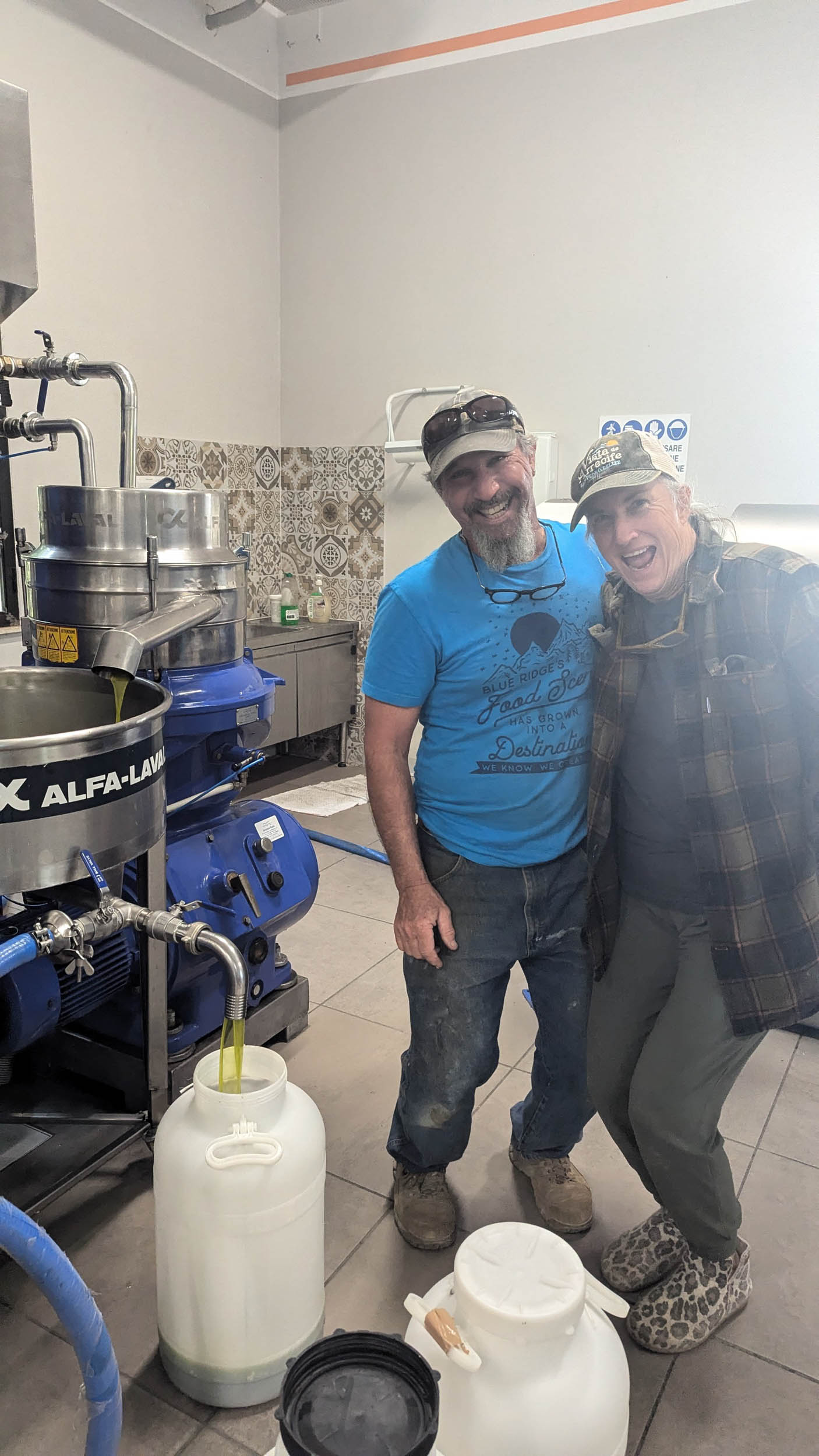
Our 2024 production, we were definitely excited. We’ve now just wrapped up our second harvest. And we are still in love with the olive and this life.

